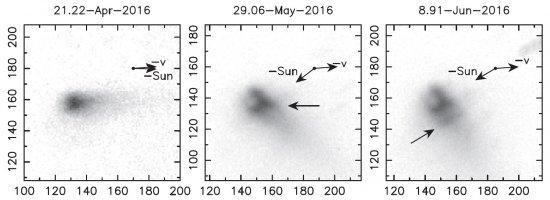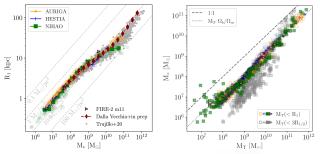We present deep imaging observations of activated asteroid P/2016 G1 (PANSTARRS) using the 10.4m Gran Telescopio Canarias ( GTC) from 2016 late April to early June. Activated asteroids are objects in orbits typical of asteroids with unlike origin in the cometary reservoirs (the Oort Cloud or the trans-neptunian belt), that ejected dust by any mechanism: sublimation of volatiles (like comets do); collision with another asteroid or rotational disruption. The images of P/2016 G1 show a dust cometary-like coma and were analysed by comparing them with simulated images obtained using a computed Monte Carlo dust model that allow to create images of a dust coma of an object that ejected dust changing the ejection conditions (including the amount of dust particles ejected with time, dust ejection velocity, dust particle sizes, etc). This allow us to obtain information about the amount of dust ejected and the ejection mechanism. P/2016 G1 images are best interpreted as the result of a relatively short-duration event with an onset of about -350+30-10 days before perihelion (i.e., around 2016 February 10), starting sharply and decreasing with -24+10-7 days. The results of the modelling imply (assuming that the observed coma is composed of particles of 1 μm to 1 cm in radius with an albedo of 0.15) an emission of 1.7x107 kg of dust during this period, and the dust size distribution follows a power law of index -3. A detailed fitting of a conspicuous westward feature in the head of the comet-like object indicates that a significant fraction of the dust was ejected along a privileged direction right at the beginning of the event, which suggests that the parent body has possibly suffered an impact followed by a partial or total disruption. From the limiting magnitude reachable with the instrumental setup, and assuming a geometric albedo of 0.15 for the parent body, an upper limit for the size of possible fragment debris of ∼50 m in radius is derived so we concluded that the object suffered a complete disruption likely because of a collision with another asteroid or because it increased its rotation period up to it rotational disruption limit.
Median stack images of P/2016 G1 obtained with the OSIRIS instrument of the 10.4m GTC through a Sloan r′ filter, at the indicated dates. North is up, East to the left. The directions opposite to Sun and the negative of the orbital velocity motion are show
Advertised on
References



